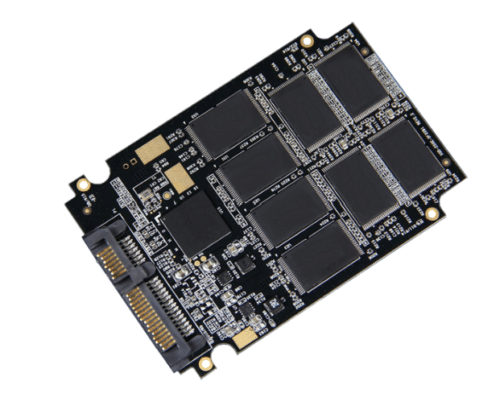The SATA II & USB 2.0 dual interface SSD solution increases computer and portable storage speeds with a controller for enhanced compatibility.

Solid State Drives (SSDs) have revolutionized data storage technology, marking a significant leap from traditional mechanical hard drives. The core of their importance lies in their use of flash memory to store data, which provides faster data access, higher reliability, and greater efficiency. Unlike their mechanical counterparts, SSDs have no moving parts, reducing the risk of data loss due to physical damage and offering silent operation. SSDs are increasingly needed in today’s fast-paced digital world, where speed and durability are paramount. Whether for personal computing, business operations, or high-demand gaming, SSDs deliver superior performance, boot times, and file transfer speeds, making them essential in modern computer systems and devices. Their energy efficiency also plays a crucial role in extending the battery life of portable devices, further underscoring their importance in the current technological landscape.
The SATA II and USB 2.0 Dual Interface SSD Solution by Zeeis is engineered for notebooks and desktop computers, doubling as a portable USB external storage drive. This solution facilitates a swift transition from development to production and sales for end-users. It ensures full compatibility with both SATA and USB standards. Featuring an eight-channel innovative design, it delivers exceptionally high bandwidth memory access rates, significantly boosting the read and write speeds of NAND flash memory chips.
The JMF602, serving as the SATA Flash Disk Controller within the solution, offers support for a wide array of widely-used NAND flash memory chips from leading manufacturers such as Toshiba, Samsung, Hynix, ST, Intel, and Micron Flash.
This device features specifications for a range of applications. It includes a 3.0Gbps SATA II interface compliant with the Serial ATA Revision 2.6 and a USB 2.0 Bulk mode transport protocol compliant with the USB Mass Storage Class specification. The device supports up to 256 flash media devices, SLC (Single-Level Cell) and MLC (Multi-Level Cell) NAND Flash chips, and NAND Flash chips with 2Kbytes and 4Kbytes program page sizes.
The device has LED indicators for USB 2.0, or SATA read/write access and link-up status. It supports dynamic power management. Performance metrics include a read performance from flash to host of up to 170 MB/sec and a write performance from host to flash of up to 135 MB/sec. Security features are built-in Hardware ECC and SMART function support.
The device supports various operating systems, including Windows versions, Linux distributions, FreeBSD, OpenBSD, NetBSD, Unix variants, Mac OS versions, MS-DOS, and FreeDOS, without requiring specific drivers.
Operating temperatures range from 0°C to 70°C for commercial operation and from -40°C to +85°C for industrial operation. All devices are non-Pb and comply with RoHS standards.
Zeeis has tested this reference design. It comes with board schematics, PCB layout, bills of materials, Gerber files, manufacturing instructions, and technical documents. You can find additional data about the reference design on the company’s website. To read more about this reference design, click here.






